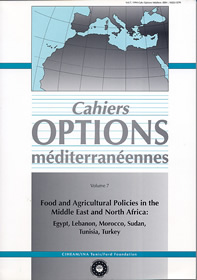| p. 7-68 | Article suivant |
Food and agricultural policies in Egypt
In mid-1990, Egypt's population was estimated to be 55,6 million (forty-four percent being urban population and a high proportion below fifteen years). The standard of living has increased during the last two decades. The structure of the economic sector has changed, agriculture's contribution to the Gross Domestic Product declining considerably. Among the crops, area devoted to cotton declined while maize, fruits and vegetables were increased. Egypt has known an economic stagnation and a real external indebtedness in the 1980s. Public investment in agriculture and irrigation has fallen from the mid-1960s to the mid-1970s and has just increased in the recent years. Compared to other sectors, agriculture has shown the slowest growth. The government has granted food subsidies (essentially wheat and flour and more recently sugar) representing five percent of total government expenditure in 1989/1990. The most important agricultural subsidies were on fertilizer, credit, cotton, pest control and yellow corn. The simplest measure of price distortion is the Nominal Protection Coefficient (NPC). For the purpose of this study two sets of NPC were completed. The results show that all major crops were taxed from 1970-1990. The economic reform adopted in mid-1991 had good effects on foreign exchange and budget deficit. Agricultural policies have also known reforms allowing to reduce the crops under control.
- [ Télécharger ]
- [ Exporter la citation ]
Vous pouvez télécharger la citation au format :
- [ Imprimer ]
- [OMC07]




